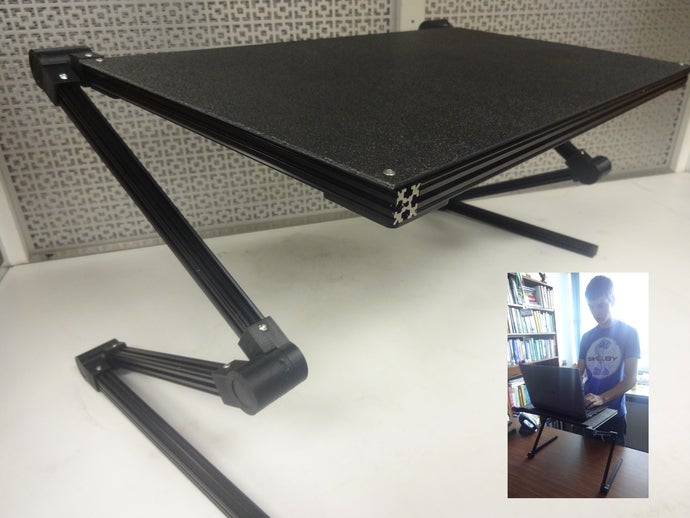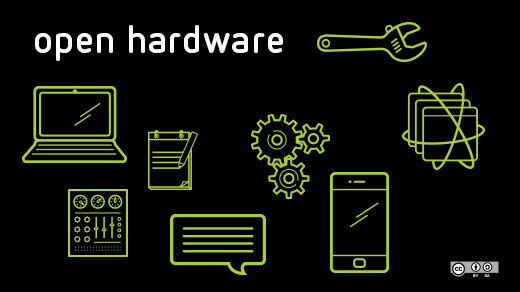Free and open source software advocates have courageously blazed a trail that is now being followed by those interested in open source for physical objects. It's called free and open source hardware (FOSH), and we're seeing an exponential rise in the number of free designs for hardware released under opensource licenses, Creative Commons licenses,or placed in the public domain.
FOSH is shared by providing the source "code" for physical objects, which normally includes a bill of materials (BOM), schematics, assembly instructions, and procedures needed to fabricate a digital replica of the original. It has many of the same benefits as open source software, too. Open hardware businesses like Sparkfun, Lulzbot, and Adafruit can easily explain the benefits with increased sales of superior products. However, FOSH is also an excellent candidate for funders targeting the greater good—whether non-profit organizations, foundations, or government agencies. These funders generally want to use FOSH to laterally scale their investments to help the greatest number of people possible. Thus, funders are often interested in the return on investment (ROI) for funds targeting a social goal.
For example, the Bill & Melinda Gates Foundation uses complex analysis to determine social value creation. Likewise, the National Science Foundation (NSF) specifically targets a return on investment for the U.S. taxpayer, with strategic investments in a portfolio to sustain national economic growth, create new high technology jobs, support the transition to a clean energy economy, and train and develop the nation's globally competitive science and engineering workforce.
Opensource.com has covered how to measure the value of open source hardware design, and to take it a step further, we can use the download substitution value (the most widely accessible method of determining FOSH value) to calculate the ROI.
6 steps to calculate ROI on open hardware
- Post your FOSH design on a website or open source repository that enables you to track downloads. Just as it is rare for people to download open source software and not use it, it is also rare for makers to download hardware designs without building at least one. It is true that downloading a design does not guarantee manufacturing, though on the other hand, a single download could be fabricated many times, traded via email, memory stick, or posted on P2P websites that are beyond conventional tracking. Thus, conservatively you can assume that each download is equivalent to one make.
- Determine the costs to make your FOSH design by summing the costs for the BOM and including any labor costs. If it is a DIY project then the labor cost is normally considered zero.
- Determine the cost to purchase an equivalent (or nearly equivalent if none exist) proprietary product.
- Subtract the cost to make your FOSH from the cost to buy the equivalent—this is how much each download saves.
- Multiply the savings per download by the total number of downloads to obtain the worldwide value at the time you do the analysis.
- Finally, calculate the ROI for your investor by subtracting the investment from your worldwide value and then dividing the remainder by the investment and multiplying the result by 100%.
We have known for some time now that low-volume customized scientific equipment can be replaced by FOSH scientific tools to create open source labs with access to hundreds of free designs for generally only 1-10% of the normal costs, creating a 90-99% savings. It is pretty easy to show that funders of science can obtain 100s to 1000s of percent return on investment. This is good for scientists. But, what about average consumers?
Calculate ROI for a Laptop Stand
First, consider an open source adjustable laptop stand. Have you read the news reports that sitting is the new smoking? Are you sitting now? FOSH provides a solution with a completely adjustable open source laptop stand. The open source stand is made from OpenBeam (a low cost, desktop sized version of commercial T-slot framing system built around m3 nuts and bolts), and some 3D printed joints using an open source RepRap 3D printer. The joints were designed in OpenSCAD, a free script-based computer aided design software, so you can customize them for your own applications. You simply press on the spring-loaded button in each joint to change the angle, and it can adjust from flat for storage to TV-tray-height, or anywhere in between.

The open source laptop stand costs about $30 to make and replaces a commercial equivalent that costs about $80, so the savings are $50 per download. The 864 downloads to date have created a global savings of $43,200 for the makers who are using it. This is real value for real people.
The design was developed by an undergraduate engineering student, so let's imagine what the ROI would be for someone like the NSF if they were funding an open source hardware project for their undergraduate summer program REU. A student's project might be focused on engineering applications that improve human health, and they might receive a summer salary of $5,000. In this case, such an investment in a simple little project would provide an 764% ROI for the global community. This is more than 100 times what one would expect if the same money was invested in a diversified stock market portfolio. This is also excluding all the normal return such research experiences provide (e.g. a smarter better trained student) and any subsequent furthering of science or engineering (e.g. the use of virgin 3D printer filament as a joint lock is a particularly clever aspect of this design that can be used for many other applications). If this same project was funded by a NPO like the Gates Foundation additional social value might be tallied (e.g. an estimate on the value of the improved health and productivity of the more than 800 people that are using the design).
This example makes it clear how sharing hardware designs can create substantial value for the global community. And, the same procedure can be used for any of your own open source hardware projects. So, stand up... stretch... and go make something with free and open source hardware!






Comments are closed.